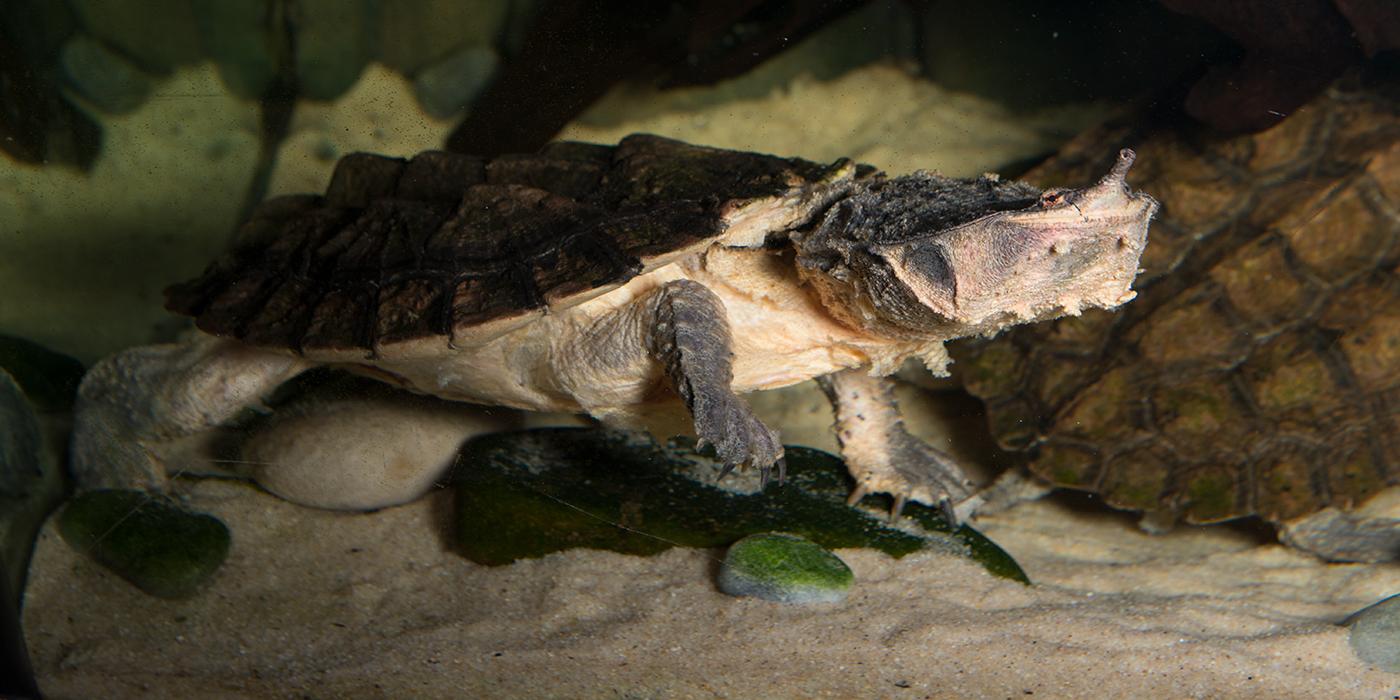
Ever heard of the Matamata Turtle? This bizarre-looking creature is unlike any other turtle you've seen. With its rough, knobby shell and leaf-like head, it looks more like a piece of driftwood than a living animal. Found in the slow-moving rivers and swamps of South America, the Matamata Turtle is a master of camouflage. But what makes this turtle so unique? From its unusual hunting techniques to its fascinating reproductive habits, there's a lot to learn about this incredible reptile. Whether you're a budding herpetologist or just curious about the natural world, these 27 facts will give you a deeper appreciation for the Matamata Turtle.
Matamata Turtle: A Unique Reptile
The Matamata turtle is one of the most unusual and fascinating creatures in the animal kingdom. Known for its bizarre appearance and unique hunting techniques, this turtle has captured the curiosity of many. Let's dive into some intriguing facts about this remarkable reptile.
-
The Matamata turtle is native to South America, primarily found in the Amazon and Orinoco basins.
-
Its scientific name is Chelus fimbriata, which reflects its fringed appearance.
-
The turtle's shell resembles a piece of bark or a pile of leaves, providing excellent camouflage in its natural habitat.
-
Matamata turtles have a flat, triangular head with numerous skin flaps and tubercles that help them blend into their surroundings.
Unique Hunting Techniques
Matamata turtles have developed some extraordinary methods to catch their prey. Their hunting style is unlike any other turtle.
-
They are ambush predators, lying motionless in the water until an unsuspecting fish swims by.
-
When prey is within reach, the turtle opens its mouth wide, creating a vacuum that sucks the prey in.
-
This suction feeding technique is highly effective, allowing the turtle to capture fish quickly and efficiently.
-
Matamata turtles primarily feed on fish, but they also consume invertebrates like insects and crustaceans.
Adaptations for Survival
Survival in the wild requires special adaptations, and the Matamata turtle has plenty of them.
-
Their skin flaps and tubercles not only provide camouflage but also help detect vibrations in the water.
-
The turtle's long neck allows it to reach out and catch prey without moving its body, minimizing detection.
-
Matamata turtles have poor eyesight but compensate with highly sensitive skin that can detect even the slightest movements.
-
They can stay submerged for extended periods, thanks to their ability to absorb oxygen through their skin and throat lining.
Reproduction and Lifespan
Understanding the reproductive habits and lifespan of Matamata turtles provides insight into their life cycle.
-
Female Matamata turtles lay between 12 to 28 eggs in a single clutch.
-
The eggs are typically buried in sandy or muddy riverbanks to incubate.
-
Incubation lasts about 200 days, after which the hatchlings emerge.
-
Matamata turtles can live up to 40 years in the wild, with some individuals reaching even older ages in captivity.
Conservation Status
The Matamata turtle faces several threats in the wild, making conservation efforts crucial.
-
Habitat destruction due to deforestation and pollution poses significant risks to their populations.
-
They are also captured for the pet trade, which further threatens their numbers.
-
Despite these challenges, the Matamata turtle is currently listed as "Least Concern" by the IUCN, though ongoing monitoring is essential.
Cultural Significance
The Matamata turtle holds a special place in the cultures of the regions where it is found.
-
Indigenous tribes in the Amazon often regard the Matamata turtle as a symbol of patience and stealth.
-
The turtle's unique appearance has made it a subject of fascination and study among herpetologists and wildlife enthusiasts.
Fun Facts
Here are some additional fun facts that highlight the quirky nature of the Matamata turtle.
-
The name "Matamata" comes from a Spanish phrase meaning "it kills, it kills," referring to its hunting prowess.
-
Unlike most turtles, Matamatas rarely bask in the sun, preferring to stay submerged in water.
-
Their shells can grow up to 18 inches in length, making them one of the larger freshwater turtles.
-
Matamata turtles are solitary creatures, usually only coming together during the breeding season.
-
They are known to make a hissing sound when threatened, although they are generally not aggressive.
-
The Matamata turtle's unique appearance has earned it nicknames like "leaf turtle" and "alligator snapping turtle of the Amazon."
Final Thoughts on Matamata Turtles
Matamata turtles are truly one-of-a-kind creatures. Their unique appearance, resembling a pile of leaves, helps them blend into their surroundings. This camouflage is vital for their survival in the wild. They’re not just about looks, though. These turtles have fascinating behaviors, like their suction feeding technique, which sets them apart from other turtles.
Understanding their habitat needs and behaviors can help in their conservation. These turtles are a reminder of the incredible diversity in the animal kingdom. They show us how evolution can create such specialized and unique creatures.
Next time you think of turtles, remember the matamata. They’re more than just a cool-looking reptile; they’re a testament to nature’s creativity and adaptability. So, keep learning and stay curious about the world around you. There’s always something new to discover.
Was this page helpful?
Our commitment to delivering trustworthy and engaging content is at the heart of what we do. Each fact on our site is contributed by real users like you, bringing a wealth of diverse insights and information. To ensure the highest standards of accuracy and reliability, our dedicated editors meticulously review each submission. This process guarantees that the facts we share are not only fascinating but also credible. Trust in our commitment to quality and authenticity as you explore and learn with us.
